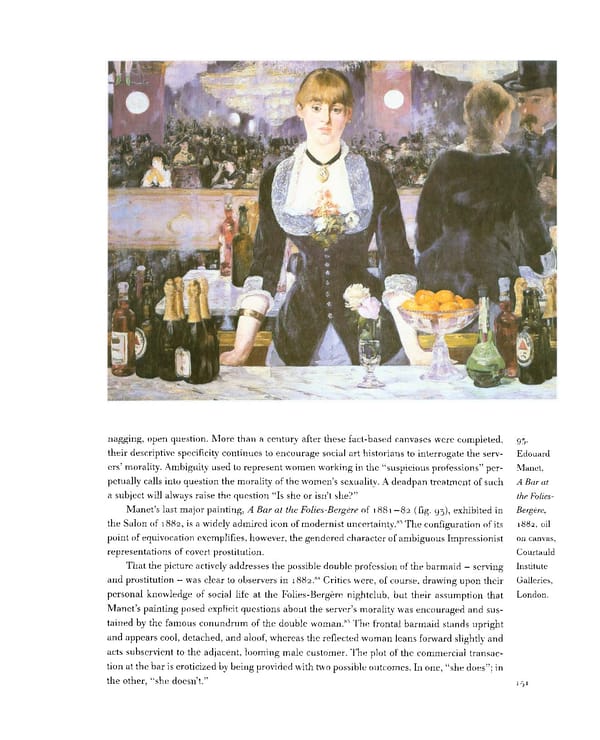nagging, open question. More than a century after these fact-based canvases were completed, 93- their descriptive specificity continues to encourage social art historians to interrogate the serv- Edouard ers' morality. Ambiguity used to represent women working in the "suspicious professions" per- Manet, petually calls into question the morality of the women's sexuality. A deadpan treatment of such A Bar at a subject will always raise the question "Is she or isn't she?" the Folies- Manet's last major painting, A Bar at the Folies-Bergere of 1881-82 (fig. 93), exhibited in Bergere, 85 1882, oil the Salon of 1882, is a widely admired icon of modernist uncertainty. The configuration of its point of equivocation exemplifies, however, the gendered character of ambiguous Impressionist on canvas, representations of covert prostitution. Courtauld That the picture actively addresses the possible double profession of the barmaid — serving Institute and prostitution — was clear to observers in i882.84 Critics were, of course, drawing upon their Galleries, personal knowledge of social life at the Folies-Bergere nightclub, but their assumption that London. Manet's painting posed explicit questions about the server's morality was encouraged and sus- 85 tained by the famous conundrum of the double woman. The frontal barmaid stands upright and appears cool, detached, and aloof, whereas the reflected woman leans forward slightly and acts subservient to the adjacent, looming male customer. The plot of the commercial transac- tion at the bar is eroticized by being provided with two possible outcomes. In one, "she does"; in the other, "she doesn't." 151
 Prostitution & Impressionists Page 171 Page 173
Prostitution & Impressionists Page 171 Page 173